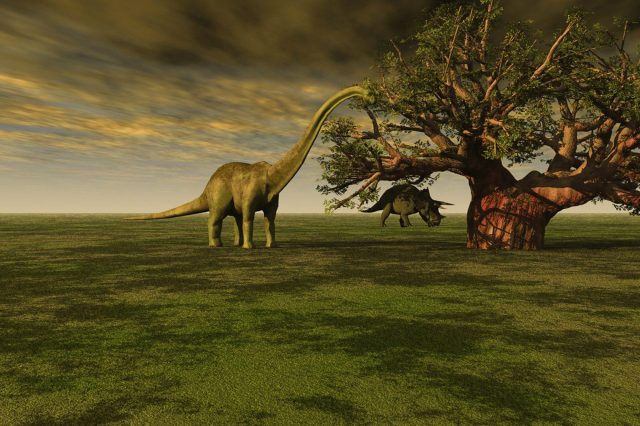Etymology is the scientific study of the origin of names, and it’s not just limited to people names. Everyone loves dinosaurs (and if you don’t then I’m sorry, but we can’t be friends) and so today we’re going to delve into the meaning behind the names of as many dinosaurs as will fit within my word limit.
Dinosaur: Let’s start with the term dinosaur itself. This means ‘terrible lizard’ and was first used in 1842 by Sir Richard Owen who was an English biologist and palaeontologist.
Gallimimus: This is a theropod from Mongolia and its name means ‘chicken mimic’ due to the similarity of its neck vertebrae with my favourite feathered friends.
Oviraptor: Also from Asia, oviraptor means ‘egg thief’ as there was a theory initially that they – you guessed it – stole eggs. The oviraptors were actually innocent and the nests their fossils were found in have since been theorised to be their own.
Brachiosaurus: The generic name means ‘arm lizard’ because the forelimbs are longer than the hindlimbs. I would have called them ‘legs’ myself but I’m over a hundred years too late and completely unqualified to have an opinion on the matter.
Giraffatitan: Can you guess what this name means? Go on, have a try! If you guessed ‘Giraffe titan’ then you win ten points for Ravenclaw! Often confused with Brachiosaurus, this sauropod is actually in a genus of its own.
Maiasaura: Discovered in Montana in 1978 close to 15 juvenile fossils, Maiasaura means ‘good mother lizard’ as this was the first time that parental behaviour had been observed in dinosaur fossils.
Troodon: Can you class an entire genus of dinosaur based on the discovery of a single tooth? Apparently you can. Meet the Troodon, meaning ‘wounding teeth’ due to the serrated edges of the tooth found in Montana in 1855.
Velociraptor: Jurassic Park lied to us, okay. Velociraptors were actually only the size of a turkey, were feathered, and lacked the ability to open kitchen doors. They were fast little terrors though and their name means ‘swift plunderer’.
Carnotaurus: Discovered in 1984 in Argentina, this ‘meat-eating bull’ was one of the fastest large theropods. The fossil is super cool because it has well-preserved skin impressions that show it had small scales and large bumps covering it.
Stegosaurus: Finally, we have the ‘roofed lizard’, Stegosaurus. Othniel Charles Marsh, a Yale palaeontologist, originally thought that the kite-shaped plates sat flat along the back, kind of like shingles on a roof. It wasn’t for quite some time after initial discovery that the true appearance of Stegosaurus would be determined.
Information gathered from a number of sources including, but not limited to: The Smithsonian, National Geographic, Wikipedia, and Britannica.








